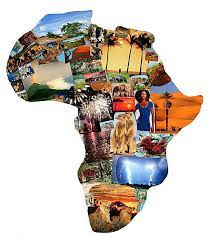Preserving African Linguistic Diversity: A Foundation for Cultural Unity and Socioeconomic Development
Introduction: Defining Key Concepts
This article examines the critical role of linguistic preservation in fostering cultural unity and socioeconomic progress across Africa. We will explore the concepts of linguistic diversity, cultural identity, and its relationship to economic development within the context of African societies. Linguistic diversity refers to the multiplicity of languages spoken within a geographical area, representing a rich tapestry of cultural heritage. Cultural identity, deeply intertwined with language, encompasses shared values, beliefs, traditions, and practices that define a community. Socioeconomic development encompasses improvements in economic conditions, social well-being, and overall quality of life. This analysis will draw upon relevant theories from sociolinguistics, anthropology, and economics to demonstrate the multifaceted benefits of African language preservation.
The Interconnectedness of Language, Culture, and Identity
Language is not merely a tool for communication; it is the bedrock of cultural identity. Each African language embodies a unique worldview, historical narrative, and system of knowledge transmission. The Sapir-Whorf hypothesis, suggesting that language shapes thought and perception, underscores the profound link between language and cultural understanding. Preserving indigenous languages safeguards the transmission of cultural heritage across generations, preventing the erosion of traditional practices, knowledge systems (e.g., indigenous medicine, agricultural techniques), and artistic expressions. This preservation strengthens community bonds and fosters a sense of shared identity, crucial for social cohesion.
Language Preservation and Community Empowerment
Linguistic vitality is directly related to the empowerment of local communities. When indigenous languages are actively used and promoted, communities gain a stronger voice in regional and national dialogues. This empowerment translates into increased participation in decision-making processes, improved access to services, and greater control over resources. Furthermore, language preservation initiatives can strengthen community-based educational programs, enabling knowledge transfer and skills development within a culturally relevant framework. This aligns with community development models that emphasize local ownership and participatory approaches.
Harnessing Linguistic Resources for Economic Growth
The economic potential of linguistic diversity is often overlooked. Preserving and promoting African languages creates opportunities in sectors such as tourism, translation services, and multilingual education. The development of culturally sensitive educational materials and tourism products in indigenous languages can attract both domestic and international markets, fostering economic growth at the local and national levels. This approach aligns with principles of sustainable development, leveraging local resources for long-term economic benefits. Furthermore, the growth of translation and interpretation industries creates jobs and stimulates economic activity.
Language Education and Technology's Role
Investing in multilingual education is crucial for language preservation. Integrating indigenous languages into school curricula, from early childhood to higher education, ensures the continuity of language transmission. This aligns with educational theories emphasizing the importance of mother-tongue instruction for cognitive development and academic achievement. Moreover, technology plays a crucial role in language preservation efforts. Digital tools, such as language learning apps, online dictionaries, and digital archives, can facilitate language learning, documentation, and accessibility, reaching wider audiences and preserving linguistic heritage for future generations.
The Role of Women in Language Transmission and Preservation
Women often play a central role in the transmission of languages within families and communities. Their active involvement in language preservation initiatives is essential for ensuring the vitality of indigenous languages. By empowering women as active participants in these efforts, we create inclusive and sustainable solutions that recognize the significance of their contributions. This aligns with gender equality principles and recognizes the vital role of women in preserving and promoting cultural diversity.
A Call to Action: Strategies for Language Preservation
Effective language preservation requires a multi-pronged approach. Governments need to implement policies that support multilingual education, promote indigenous language use in official settings, and invest in language documentation projects. Community-based initiatives, involving language speakers, cultural organizations, and educational institutions, are critical for fostering a sense of ownership and ensuring the sustainability of these efforts. International collaboration and knowledge sharing can enhance effectiveness and facilitate the development of best practices for language preservation across the African continent.
Conclusions and Recommendations
Preserving African linguistic diversity is not merely a matter of linguistic conservation; it is a fundamental strategy for promoting cultural unity, empowering communities, and fostering socioeconomic development. By recognizing the interconnectedness of language, culture, identity, and economic progress, we can develop targeted interventions that safeguard linguistic heritage and promote inclusive growth. Further research should focus on the development of effective language preservation strategies tailored to specific African contexts, considering the diverse linguistic landscapes and socio-cultural factors. International cooperation and knowledge sharing are vital for supporting these efforts, ensuring the sustainable preservation of Africa's rich linguistic heritage for generations to come. The successful implementation of these strategies will contribute to a more equitable, culturally vibrant, and economically prosperous Africa.
Reader Pool:
Considering the interconnectedness of language, culture, and socioeconomic development, what innovative strategies would you recommend for fostering inclusive and sustainable language preservation initiatives in diverse African contexts?
```






No comments yet. Be the first to share your thoughts!